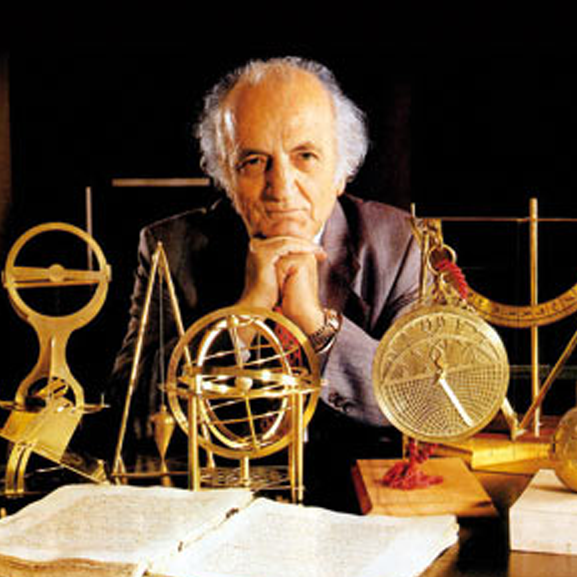By Mukhtar Ahmad
Recently I came across three personalities all more than 90 years two of them living and working and one died recently on June 30 at the age of 94 years. What is remarkable that these nonagenarians are working or worked in their fields and produced results that may be an envy even for younger generation. Three names that are being discussed here are:. Professor Dr Fuad Sezgin , founder of Historical Arab-Islamic Institute of Science at Johnn Wolfgang Goethe University Frankfurt, Germany. Who died in Istanbul on June 30 ,2018 at the age of 94. Next person is John Goodenough a 96 year old scientist known around the world for his pioneering work that led to the invention of the rechargeable lithium-ion battery. The third personality is that of Tu Dr. Mahathir Mohammed a 93 yerar old Malaysian politician. What is remarkable about these personalities can be seen from their pioneer work in their feild.
Professor Dr Fuad Sezgin, a prominent historian of science in the world and leading figure of scholarship in Islamic science and civilization was born in Bitlis in eastern Turkey on October 24, 1924. He graduated from the faculty of literature at Istanbul University in 1947. Sezgin came in contact with Helmutt Ritter a renowned 20th century German scholar of oriental studies who used to teach courses on Islamic sciences and orientalism at İstanbul University. Ritter urged him to read the works of Al-Khwarizmi, Ibn Yunus and Ibn al-Haytham in order to broaden his knowledge of mathematics. From that day on, he decided to learn about the contributions of the Islamic world to science and to make a contribution to science himself . By his intensive research work Dr Sezgin had presented before the world that Muslims have invented, discovered and developed a host of sciences like medicine, astrology, geography, chemistry, physics and other subjects.
His most accomplished work Geschichte des arabischen Schrifttums (The history of Arabic and Islamic heritage) the first volume of his great work was published in 1967. He spent 40 years collecting material for the book, which is recognized as the finest and most thoroughly documented work of its kind. Until his death, Sezgin published 16 other volumes. And he was writing the 18th volume, when he died.
Sezgin was also a pioneer in establishing institutions that carried the scholarly knowledge to the world public at large. He founded the Institute for the History of the Arab-Islamic Sciences, in 1982, under Goethe University in Frankfurt and developed into a most significant centre for studies in the field. In 1983 he founded the Museum attached to the same Institute, where around 800 objects are displayed, containing, among others, replicas of instruments created and/or used by scientists for observations, experiments, measurements and calculations. Of great importance is the Museum for the History of Science and Technology in Islam which was established under his direction in Istanbul in 2008.

Professor John Goodenough a German-born American professor and solid-state physicist was born on 25 July 1922 in Jena, Germany. In his early life he had to face trouble marriage of his parents. He has to struggle with undiagnosed dyslexia He could not read at Groton, understand his lessons, or keep up in the chapel. Instead, he occupied himself in explorations of the woods, its animals and plants. Nonetheless, somehow everything finally came together. He won a place and an aid package at Yale, and went on to graduate in mathematics. in 1943. and his master’s and Ph.D. in physics from the University of Chicago in 1951 and 1952 He began his career at the Massachusetts Institute of Technology’s Lincoln Laboratory, where he laid the groundwork for the development of the random-access memory (RAM) for the digital computer , and jointly devised the Goodenough–Kanamori rules on magnetic superexchange He left MIT to join university of oxford as professor and head of the Inorganic Chemistry Laboratory (1976–1986),II In 1980, Goodenough, then aged 57, invented cobalt-oxide cathode, the single most important component of every lithium-ion battery. Goodenough’s cathode is contained in almost every portable electronic device ever sold. Others have tried to improve on the cobalt-oxide cathode.
The team of engineers led by 94-year-old John Goodenough, professor in the Cockrell School of Engineering at The University of Texas at Austin has developed the first all-solid-state battery cells that could lead to safer, faster-charging, longer-lasting rechargeable batteries for handheld mobile devices, electric cars and stationary energy storage.

Mahathir Mohammed Mahathir Mohamad was born on December 20, 1925, in Alor Setar, in the state of Kedah in northern Malaysia. His father was a respected teacher at an English language school.Mahathir became active in the United Malays National Organization (UMNO), Malaysia’s largest political party, and was elected to its policy-making group, the Supreme Council. He won elected to House of Representatives in 1964. His book Malay dilemma which criticised Malay was disliked by Prime Minister Abdul Rahman, and the UMNO banned the book and expelled Mahathir from the party. Rahman resigned in 1970, and Mahathir was reinstated in the UMNO in 1972.. He was re-elected to parliament in 1973, promoted to a Cabinet position in 1974 and rose to deputy prime minister in 1976. He was elected president of UMNO when Hussein Onn, retired. In June 1981. He became prime minister in July1981.
He retired as prime minister on October 31, 2003. Mahathir withdrew from the party. after UMNO and its partners lost their two-thirds legislative majority for the first time in several decades in 2008., Mahathir announced in January 2018 that he would stand as a candidate for prime minister for a coalition of opposition parties in the general election, and in a stunning upset, on May 9, 2018, the 92-year-old Mahathir won a narrow majority, with his coalition claiming 122 of the 222 seats. He was sworn in as prime minister the following day.
Mukthar Ahmad can be reached at: [email protected]


